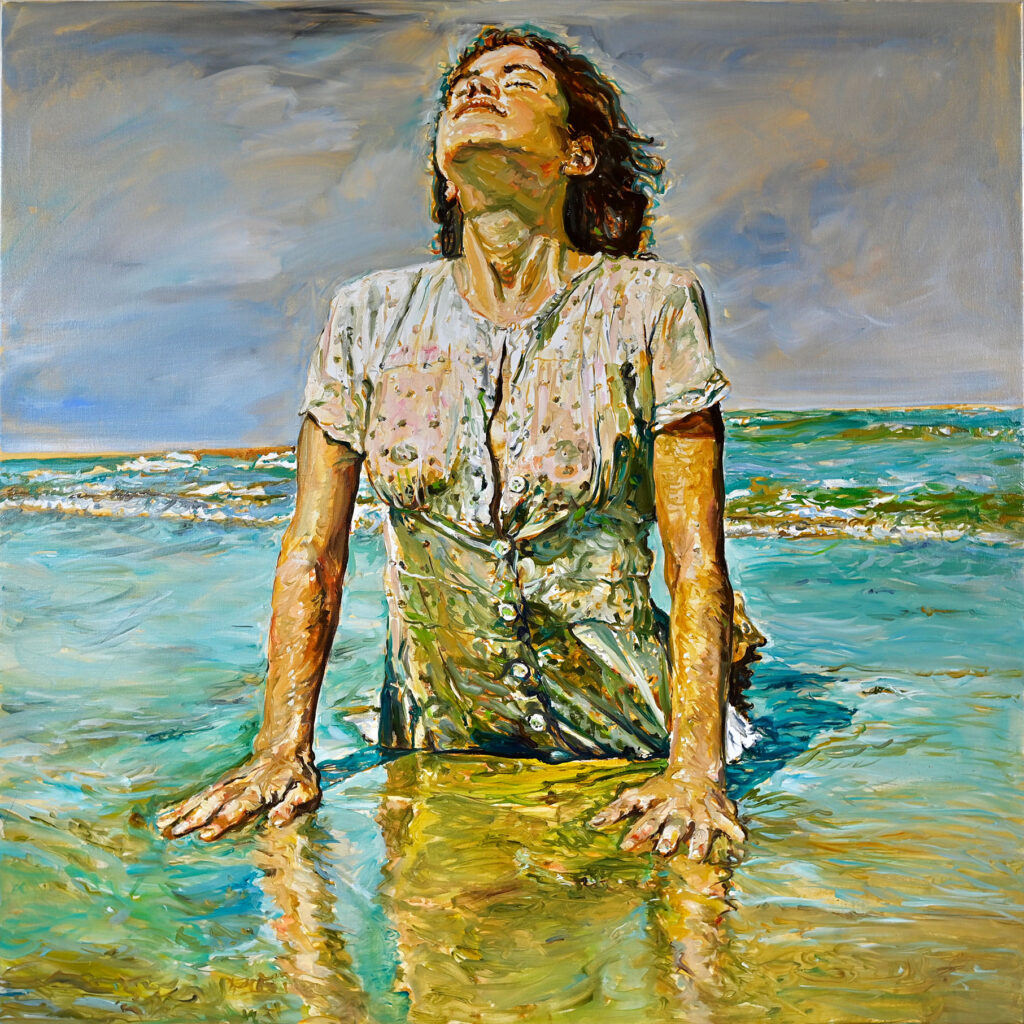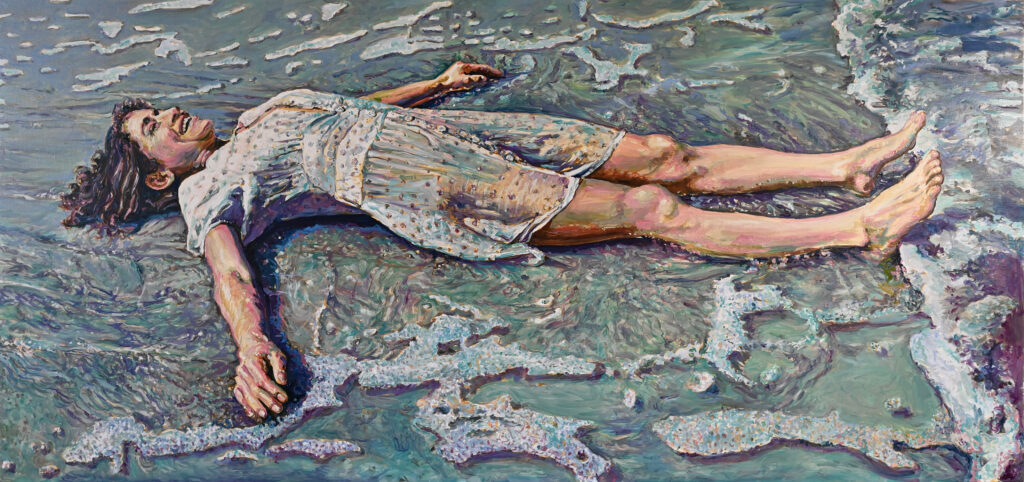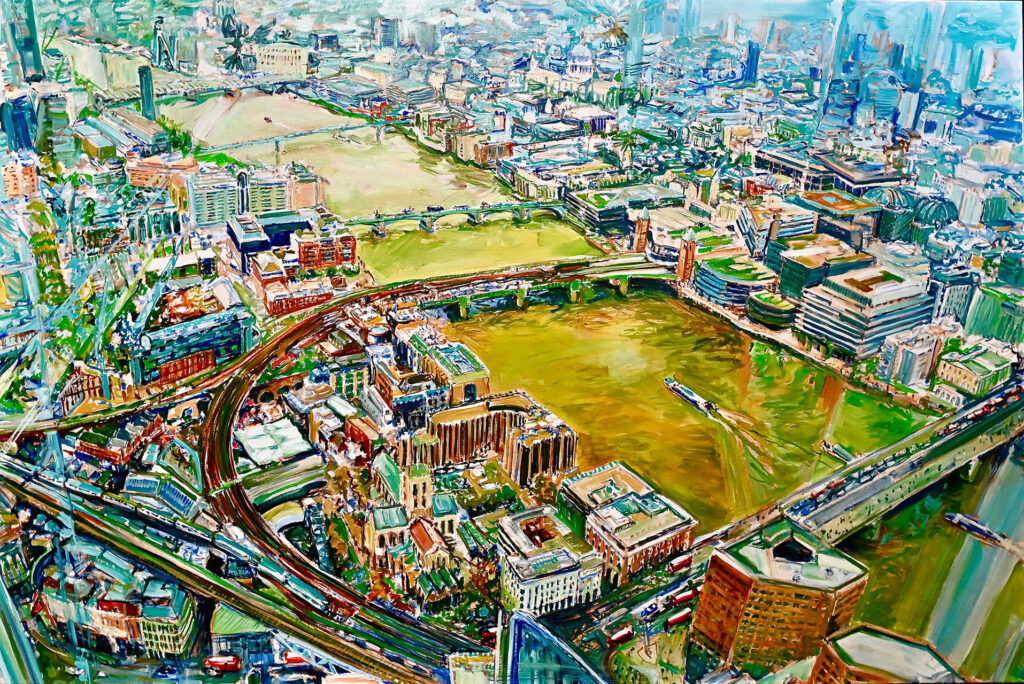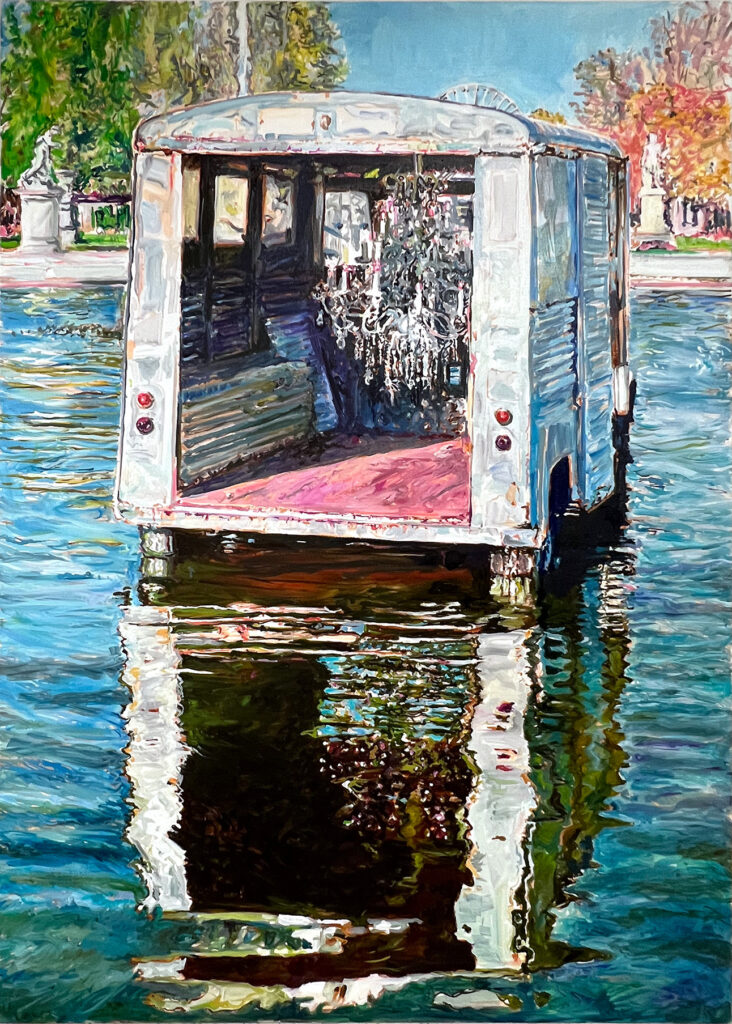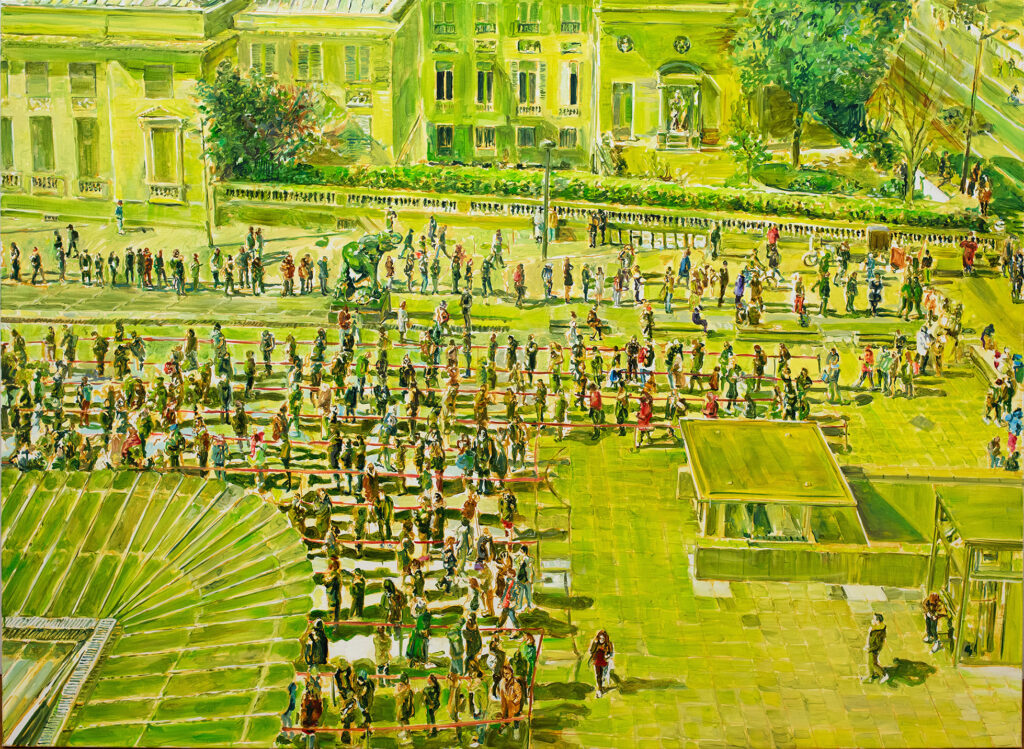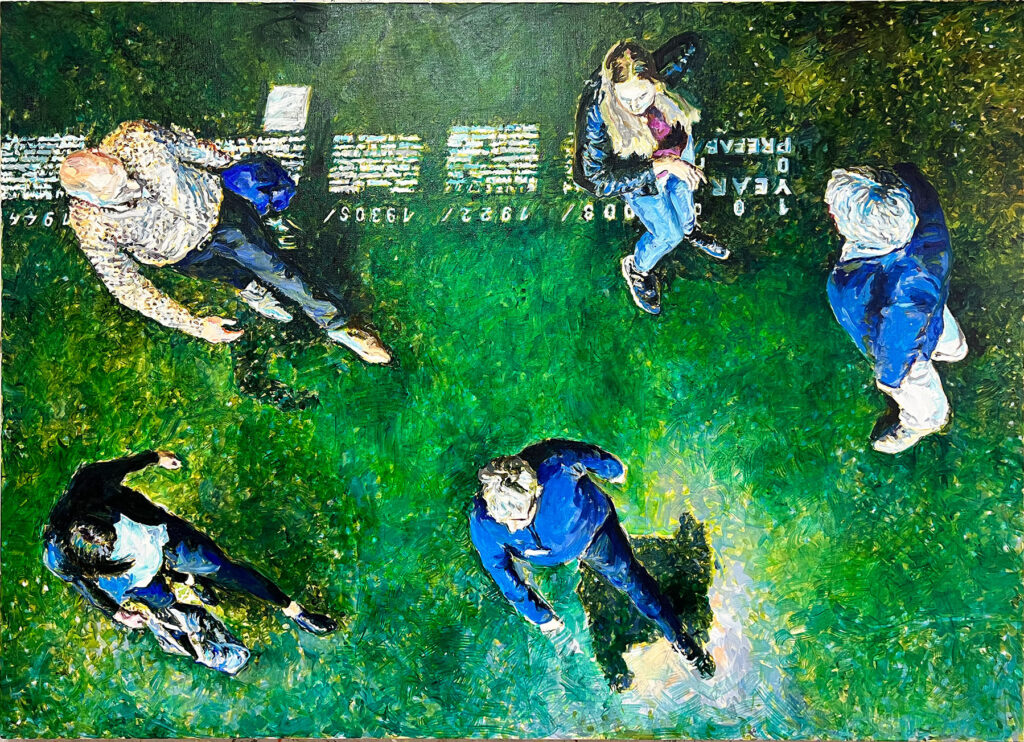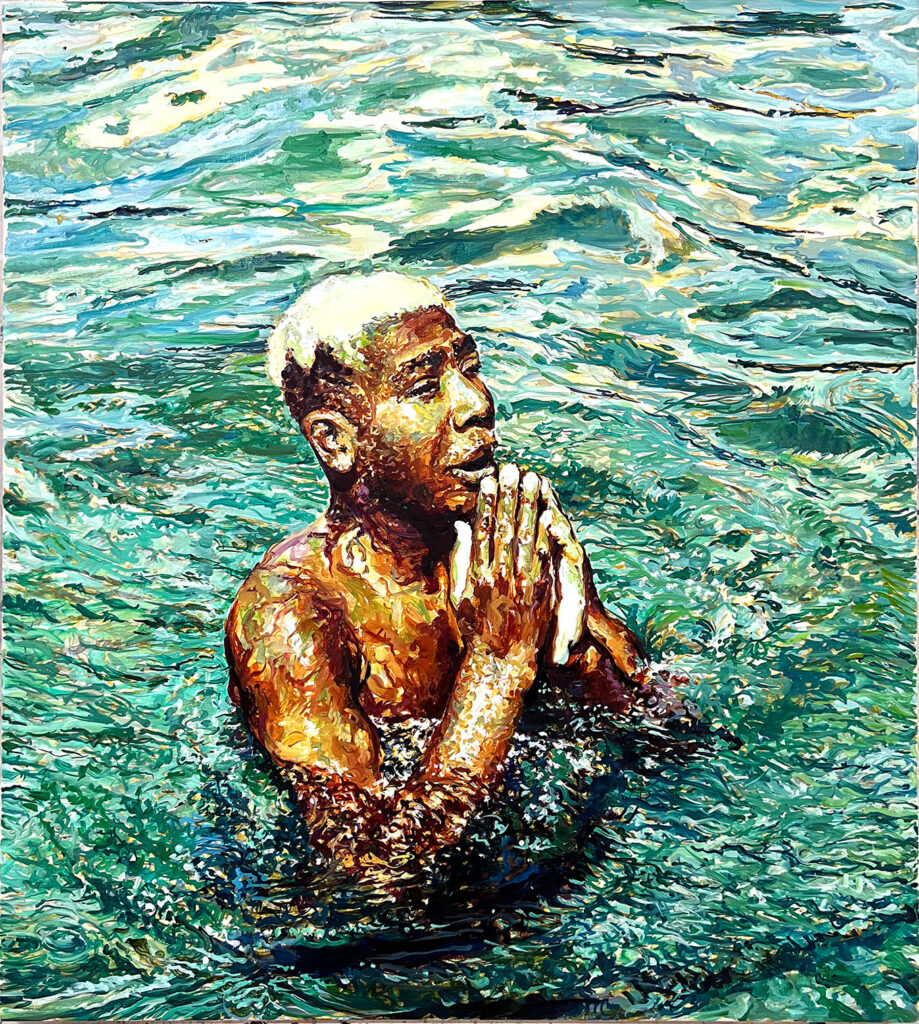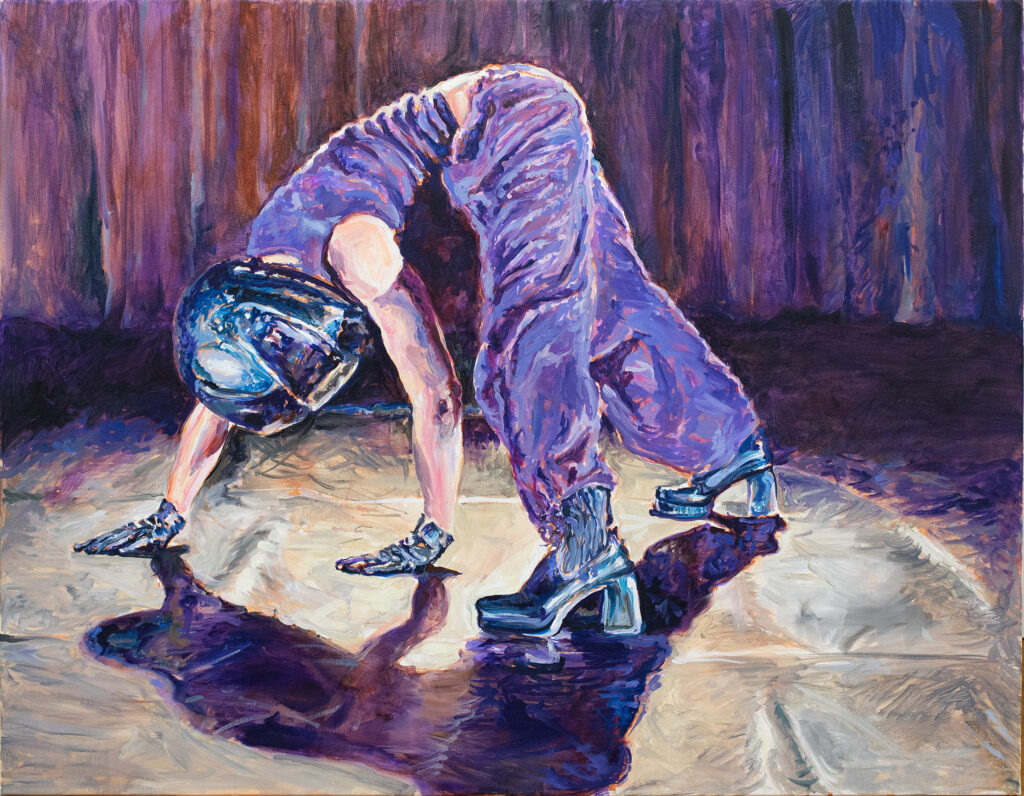Luc Dondeyne | Art Antwerp 2023
| There are quite a few paradoxes in Luc Dondeyne’s paintings. On the one hand they’re figurative, easy to read, and the images are directly derived from the recognizable reality that surrounds us. It’s as if they want to please the spectator, be-cause Dondeyne—at least at first sight—shows attractive people, sometimes partially un-dressed, who are either in a sort of holiday mood, or engaged in musing, posing, looking or carrying out everyday actions. Yet, there’s more to it than meets the eye at first sight. For example, the palette the artist uses, is rather odd, to put it mildly. In the work of, let’s say the past decade, Dondeyne uses what I’d like to call ‘intense colours’. One feels inclined to refer to an overexposed reality, but that’s not really it. Neither—or at least not always—does Dondeyne paint scenes with a scorching sun. Nor does he use a contre jour technique to create sharp contrasts. (…) What we really see in these paintings is an intensified reality the painter engraves on our retina through the use of intense, sparkling, vibrant colours. Quite rightly some authors have pointed to the fact that Dondeyne continues the heritage of impressionism. He deliberately intensifies the palette of the impressionists and makes full use of the scientific understand-ing that colours are mixed in our brain. His also goes beyond the famous stripe technique used by some impressionists. Often the stripes turn into waves and arabesques, or even small vortexes of paint. This results in an intense, slightly strange and alienating image that ‘bites’ into our gaze and because of the whirling brush strokes seems ‘frozen’ in an eternal movement… That, too, is of course a paradox. [Eric Rinckhout] | Luc Dondeyne toont zich niet enkel als doorvoelde observator van de (hem omringende) werkelijkheid als schilder, maar tevens – en dit is minstens even belangrijk – als een diepgaand kijkend onderzoeker naar de kunstgeschiedenis, en dit vanuit een persoonlijk relevante, selectieve invalshoek. In zijn veelvuldig bezoeken van tentoonstellingen, lezen over hedendaagse (schilder)kunst, etc. lijkt hij immers geen genoegen te nemen met een louter informatieve nieuwsgierigheid naar relevante ontwikkelingen binnen die hedendaagse kunst, maar is hij tevens met een scherp bewustzijn op zoek naar zijn eigen schilderkundige pedigree. Die selectieve doorgedreven zoektocht lijkt zelfs ideologische trekken te krijgen, in de zin dat Dondeyne steeds probeert door te stoten tot de fundamentele ideologie van zijn eigen subjectief ervaren artistieke voorgeschiedenis, er zich volledig van te doordrenken, om diezelfde ideologie dan nadien in zijn werk des te overtuigender een kanjer van een inhoudelijke hak te zetten. In die zin heeft Luc Dondeynes artistieke levenswandel van de laatste tien jaar wel iets van een gefocust maar gezwind ‘kill your darlings’-parcours ten opzichte van zijn eigen, zorgvuldig geobserveerde kunstgeschiedenis. Gefocust omwille zijn doordachte welbewustheid, gezwind omdat hij dit nooit zonder een vette streep humor doet… [Thibaut Verhoeven] |
